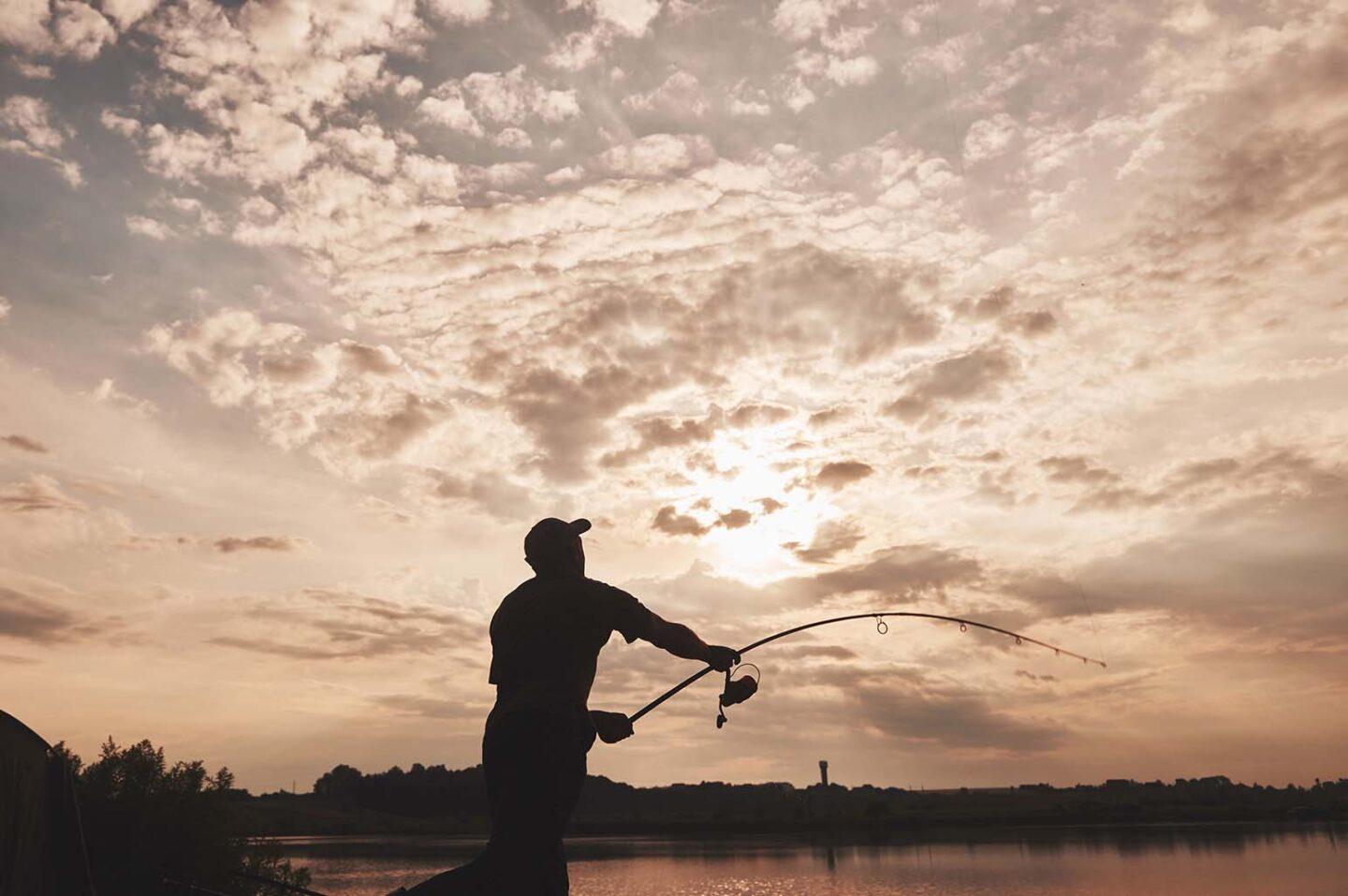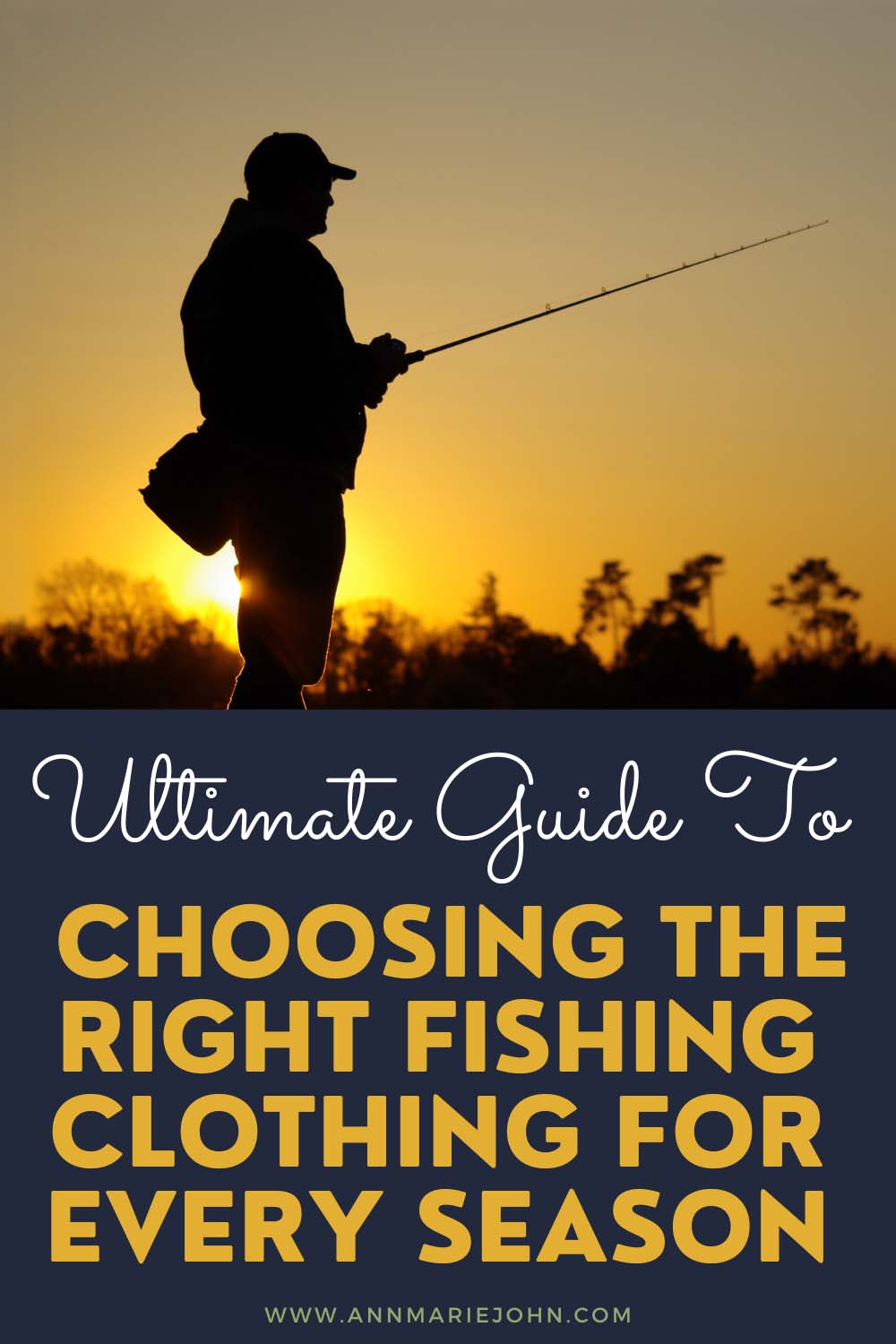Take the guesswork out of your next fishing trip! We’ll show you how to select clothes and gear that will keep you comfortable and safe in any season.

Picking the right fishing clothes for the weather is important. If you aren’t dressed right, your fishing trip can be unpleasant or even dangerous. According to the BoatUS Foundation, falling overboard is the top cause of deadly boating accidents.
Having proper outerwear reduces risk and keeps you comfortable in any season. Here are some tips for choosing the right fishing jacket, bibs, gloves, and other gear based on the temperature and conditions.
Analyzing Weather Patterns and Fishing Conditions
The weather has a big impact on how fish behave and eat. This is because fish are cold-blooded. Their bodies change temperature along with the water. Here is a visual representation showing which seasons are popular for fishing activities:
Here are some key points in analyzing weather patterns and fishing conditions:
- Fish eat less in cold water since their metabolism slows down. They eat more when the water is warm because they are more active.
- Each fish species has a temperature range within which it can survive. Outside of this, they can’t breathe or feed.
- Drops in air pressure can make fish feed wildly. But rises in pressure make them stop eating.
- Wind and rain influence how deep fish will swim. Thunderstorms often improve fishing.
Knowing how weather affects fish helps you plan great fishing trips. Check the forecasts before going out. And be ready to adapt to changing conditions. Understanding fish behavior and picking the right off-shore clothing makes outfishing the weather easier.

Seasonal Guide to Selecting Fishing Clothing
Fishing clothes need to handle the weather in each season. Spring brings unpredictable conditions. Summer has heat and sun. Fall turns cooler and windier. Winter means extreme cold.
Your fishing jackets, bibs, gloves, and gear should match the conditions.
Look for waterproofing, UV protection, insulation, and ice fishing preparation. These features keep you comfortable and safe.
Knowing how weather impacts fish behavior is step one. Step two is gearing up for each season accordingly. The right off shore clothing conditions help you catch fish while protecting yourself. Let’s explore the must-have seasonal essentials for smart anglers.
A. Spring Fishing: Navigating Through Unpredictable Weather
In spring, the weather can change in a short time. It’s smart to wear clothes that can handle rain and wind. Look for jackets and pants made of waterproof and windproof materials. Breathable fabrics keep you dry on the inside too. Fully taped seams prevent leaks. Longer jackets give you more coverage.
Layering is key for changing temperatures. Bring extra fleece jackets and vests. So you can wear them over moisture-wicking base layers as needed. Having a few lighter layers is better than one bulky jacket. This allows you to add or remove layers with ease.
B. Summer Fishing: Combating Heat and Sun Exposure
Hot summer days require sun protection and breathable clothes. Look for clothes rated UPF 50+ to block UV rays. Built-in hoods and chin guards give your face and neck extra coverage.
Lightweight, moisture-wicking fabrics like polyester and nylon blends keep you cool. Look for ventilation features like zippered pits and mesh panels.
C. Fall Fishing: Preparing for Cooler Temperatures and Wind
Cooler fall temperatures and windy days call for warm layers and wind protection.
Insulated jackets and layers with down, fleece, or PrimaLoft provide warmth without overheating. Versatile layers allow custom combinations.
Windproof jackets, pullovers, and pants made with wind-resistant membranes like Gore Windstopper guard against gusts. Weather-resistant softshell pants add protection.
D. Winter Fishing: Ensuring Warmth in Extreme Cold
Very cold winter weather demands retaining body heat while allowing ventilation and movement. Wool, fleece, and thermal middle and base layers paired with heavy parkas and bibs rated for subzero temperatures provide insulation. Adjustable hoods and cuffs seal out the cold.
Specialized suits with synthetic or down insulation and fully taped waterproof, windproof protection to -30°C and below are ideal. Features like zippered pits provide ventilation and prevent overheating when drilling holes.
Material and Technology: The Backbone of Effective Fishing Outerwear
Ever wondered what keeps you dry during a spring shower on the lake or shields you from the harsh summer sun? The secret lies in the fabric enveloping you and the advanced technology stitched into every seam of your fishing outerwear.
A. Exploring Different Materials Used in Fishing Outerwear
Let’s look at the main types of materials used. Synthetic fibers like nylon and polyester are popular. They make clothes water-resistant and quick to dry. Synthetics are also durable, meaning they resist rips and damage.
Natural fibers like wool and cotton provide breathability. This keeps you from getting too hot and sweaty. They also feel soft against the skin. Many clothes combine synthetic and natural fibers. This gives you the best of both worlds.
New material technologies take fishing clothes to the next level. Gore-Tex membranes block rain but allow sweat vapor to escape.
This makes clothes waterproof yet breathable. Insulating Polartec fabrics trap body heat to keep you super warm. UPF-rated fabrics protect you from the sun’s harmful UV rays.
B. Ensuring Durability and Longevity of Fishing Wear
Quality materials need proper care to last a long time. Always follow the care instructions from the manufacturer. Use special cleaners made for waterproof fabrics. Only wash when needed to preserve water resistance. Hang clothes to dry fully away from direct heat. Heat can damage technical fabrics.
Look for trusted waterproofing like Gore-Tex and sealed seams that prevent leakage. Ripstop fabrics resist tearing. Reinforcements in high-wear areas add durability. These signals mean fishing clothes are well-made and built to last.
Safety and Comfort: Non-Negotiable Aspects of Fishing Apparel
Fishing clothes must protect you from the weather and keep you safe and comfortable. Materials and technology are crucial. But safety and comfort features are just as important.
A. Ensuring Visibility and Safety in Various Fishing Environments
Use these features to be visible and safe in all types of weather. Reflective prints or strips and bright colors like orange or yellow help others see you in rain, fog, or low light. Attachable beacon lights and safety gear integrate with your clothes.
Look for built-in safety features like whistle pockets, grab handles on jackets, and PFDs with enough storage. These can be real lifesavers.
B. Prioritizing Comfort and Mobility on Fishing Trips
Good fishing clothes allow easy movement and all-day comfort. An ergonomic fit with stretch panels ensures freedom of motion. Features like adjustable hems, velcro, and elastic cuffs are ideal.
Well-designed and placed pockets and compartments let you easily access gear and essentials. Attachment loops for tools are convenient. Prioritize these aspects so weather protection doesn’t mean discomfort.
Ethical and Sustainable Choices in Fishing Outerwear
Cocooning ourselves in the comfort and safety of advanced outerwear is necessary. But being thoughtful toward the planet that houses the very environments we seek to explore and protect is important.
A. Navigating Through Sustainable Fishing Wear Options
Choose options that protect nature. Look for recycled or upcycled materials and responsible manufacturing that reduces waste and pollution.
Support brands with sustainability certifications and transparency. They take accountability for people and the planet.
B. Making Ethical Choices in Purchasing Fishing Wear
Obtain fishing clothes through ethical means. Choose fair-trade-certified brands that ensure good working conditions and fair wages for makers.
Buy from local and small-scale manufacturers and retailers. This supports communities and reduces their environmental impact. Make choices that align with your passion for the outdoors and positive change.
Frequently Asked Questions
1. What are the best fabrics for fishing in hot weather?
Lightweight, breathable fabrics like polyester blends are ideal to prevent overheating and sweatiness. Look for moisture-wicking properties.
2. How do I make my fishing clothes more visible for safety?
Choose bright colors like yellow or orange. Add reflective strips or prints. Attach beacon lights to your clothes and gear.
3. What features should I look for to allow easy movement?
See stretch panels in high-motion areas. Opt for adjustable hems and elastic or velcro cuffs. An ergonomic fit allows freedom.
Key Takeaway
With this new information, picking the right fishing clothes for each season is easier. You now have answers to common questions. Getting ready for your fishing adventures will be exciting, not stressful!
As you put on your fishing clothes and head out, I hope you feel connected to the water and wind. And that your time fishing is full of adventure, discovery, and happiness. Tight lines out there!
